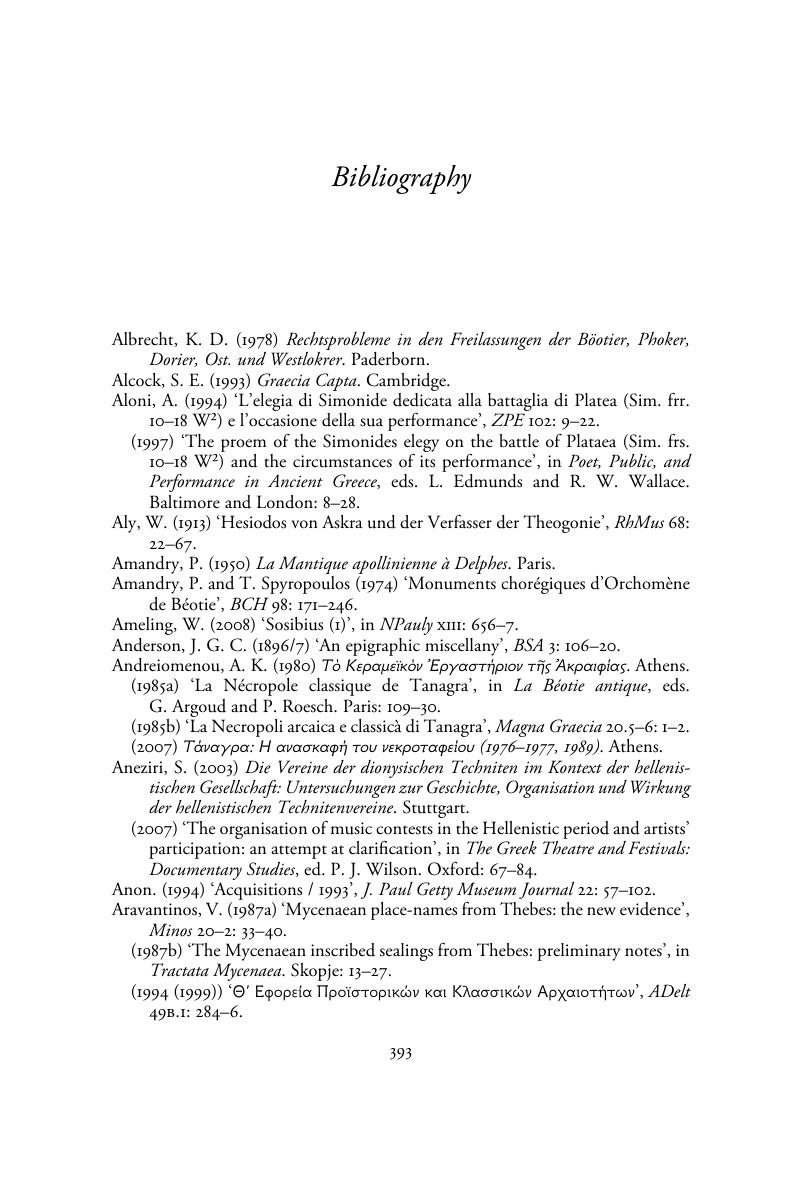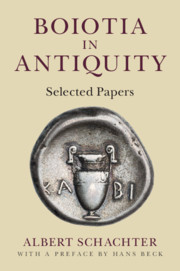Book contents
- Boiotia in Antiquity
- Boiotia in Antiquity
- Copyright page
- Dedication
- Contents
- Illustrations
- Author’s foreword
- Preface
- Acknowledgements
- Note on the text
- Abbreviations
- Map of Boiotia
- Part I Introduction
- Part II History: Boiotian
- Part III History: Boiotian and other
- Part IV Boiotian institutions
- Part V Literature
- Part VI Cult
- Bibliography
- Book part
- References
Bibliography
Published online by Cambridge University Press: 05 May 2016
- Boiotia in Antiquity
- Boiotia in Antiquity
- Copyright page
- Dedication
- Contents
- Illustrations
- Author’s foreword
- Preface
- Acknowledgements
- Note on the text
- Abbreviations
- Map of Boiotia
- Part I Introduction
- Part II History: Boiotian
- Part III History: Boiotian and other
- Part IV Boiotian institutions
- Part V Literature
- Part VI Cult
- Bibliography
- Book part
- References
Summary

- Type
- Chapter
- Information
- Boiotia in AntiquitySelected Papers, pp. 393 - 423Publisher: Cambridge University PressPrint publication year: 2016



